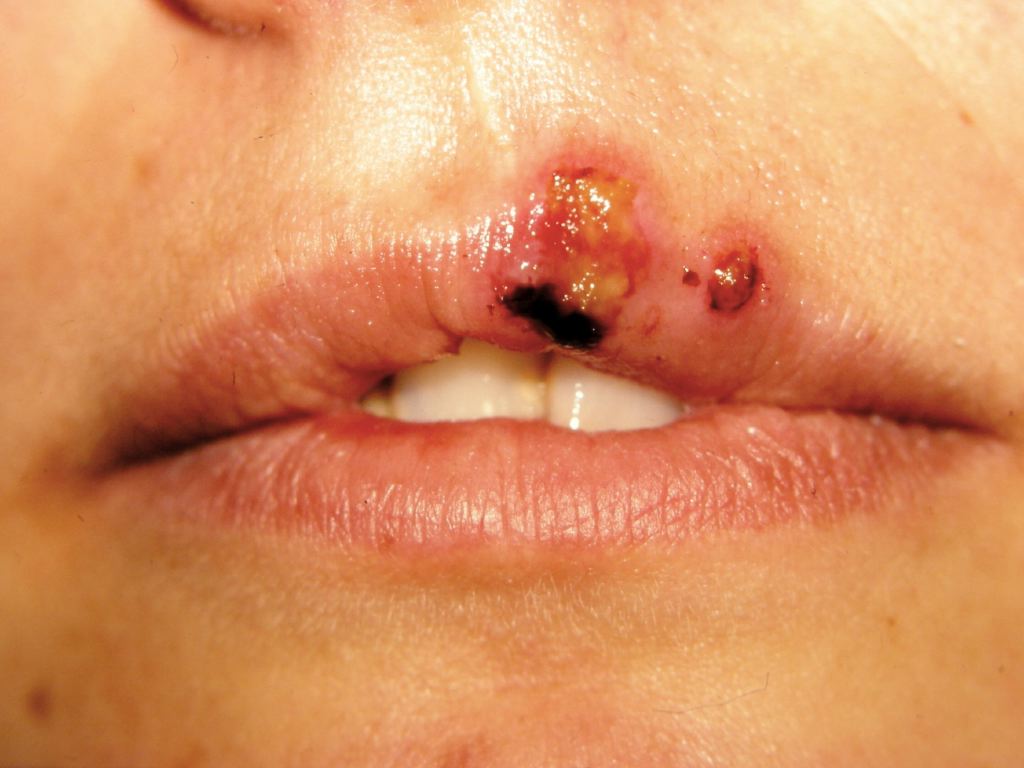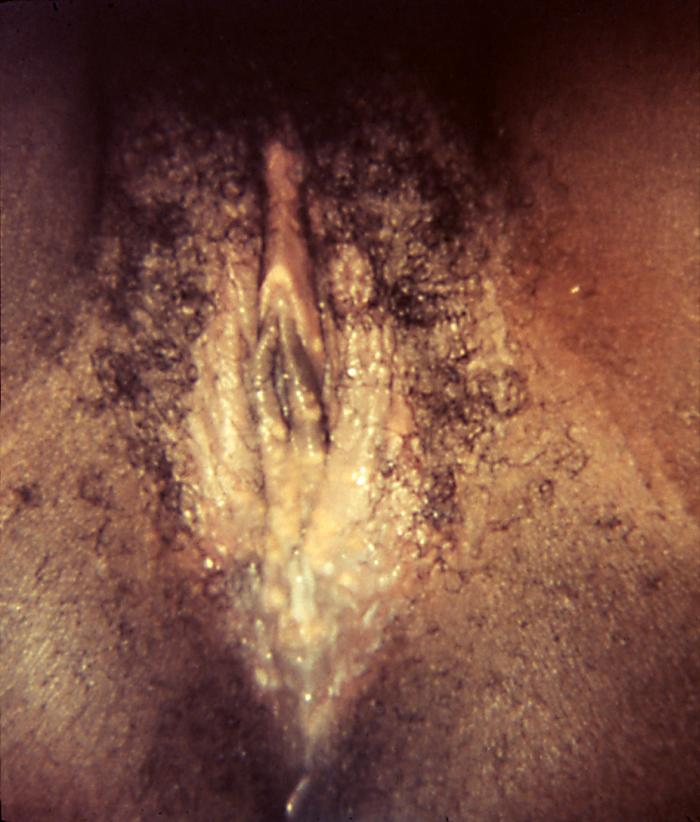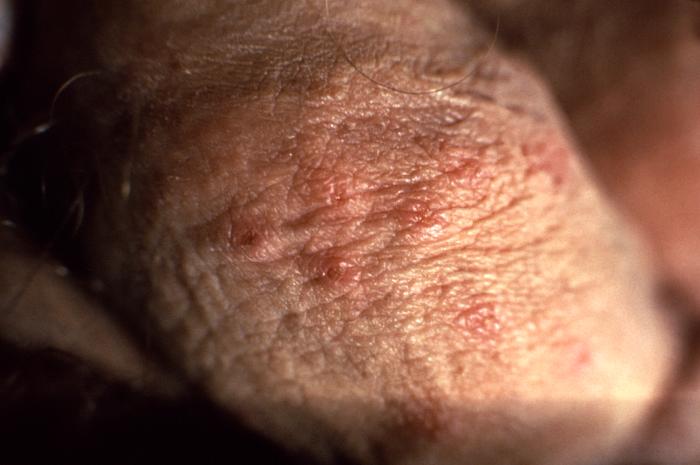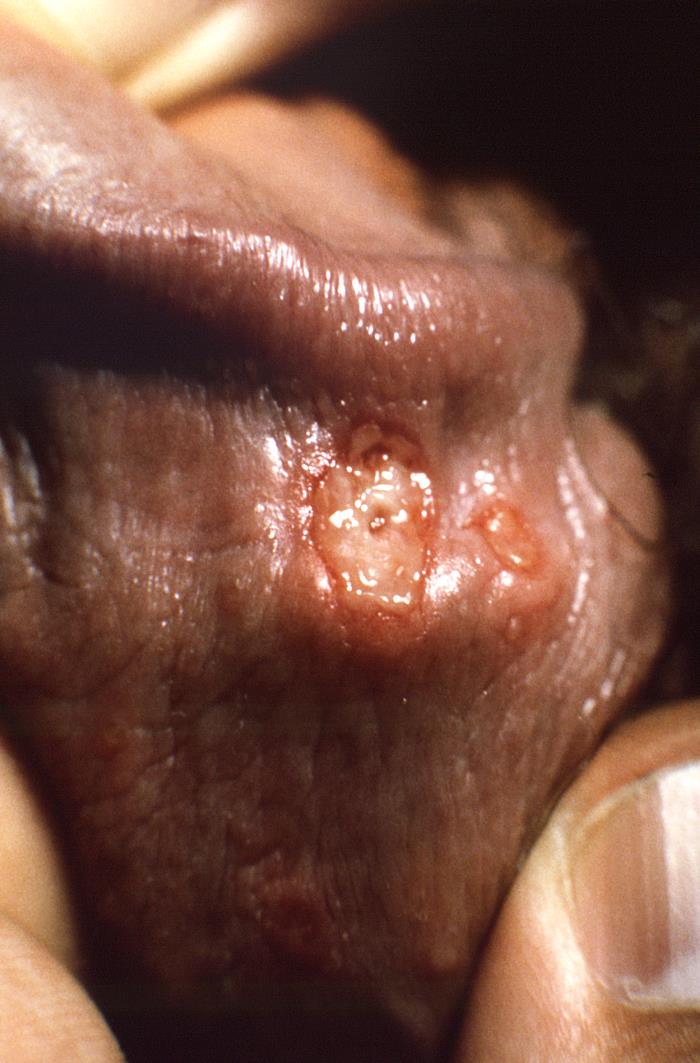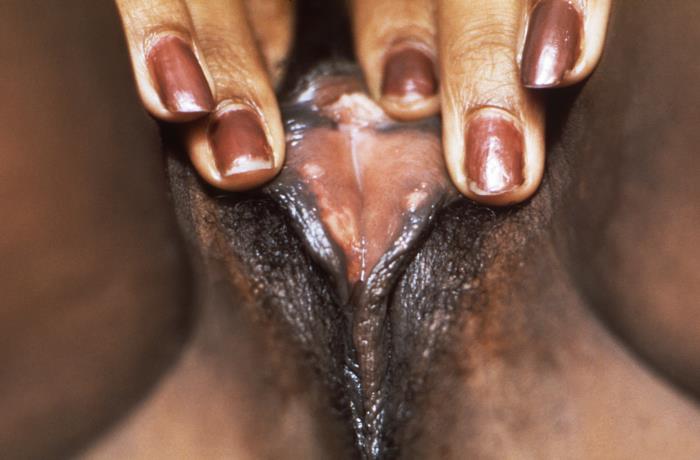[1]
Workowski KA, Bolan GA, Centers for Disease Control and Prevention. Sexually transmitted diseases treatment guidelines, 2015. MMWR. Recommendations and reports : Morbidity and mortality weekly report. Recommendations and reports. 2015 Jun 5:64(RR-03):1-137
[PubMed PMID: 26042815]
[2]
Whitley R, Baines J. Clinical management of herpes simplex virus infections: past, present, and future. F1000Research. 2018:7():. pii: F1000 Faculty Rev-1726. doi: 10.12688/f1000research.16157.1. Epub 2018 Oct 31
[PubMed PMID: 30443341]
[3]
Sauerbrei A. Herpes Genitalis: Diagnosis, Treatment and Prevention. Geburtshilfe und Frauenheilkunde. 2016 Dec:76(12):1310-1317. doi: 10.1055/s-0042-116494. Epub 2016 Oct 18
[PubMed PMID: 28017972]
[4]
Fleming DT, Leone P, Esposito D, Heitman CK, Justus S, Chin S, Fife KH. Herpes virus type 2 infection and genital symptoms in primary care patients. Sexually transmitted diseases. 2006 Jul:33(7):416-21
[PubMed PMID: 16601657]
[5]
Anzivino E, Fioriti D, Mischitelli M, Bellizzi A, Barucca V, Chiarini F, Pietropaolo V. Herpes simplex virus infection in pregnancy and in neonate: status of art of epidemiology, diagnosis, therapy and prevention. Virology journal. 2009 Apr 6:6():40. doi: 10.1186/1743-422X-6-40. Epub 2009 Apr 6
[PubMed PMID: 19348670]
[6]
Bradley H, Markowitz LE, Gibson T, McQuillan GM. Seroprevalence of herpes simplex virus types 1 and 2--United States, 1999-2010. The Journal of infectious diseases. 2014 Feb 1:209(3):325-33. doi: 10.1093/infdis/jit458. Epub 2013 Oct 16
[PubMed PMID: 24136792]
[7]
Centers for Disease Control and Prevention (CDC). Seroprevalence of herpes simplex virus type 2 among persons aged 14-49 years--United States, 2005-2008. MMWR. Morbidity and mortality weekly report. 2010 Apr 23:59(15):456-9
[PubMed PMID: 20414188]
[8]
Berger JR, Houff S. Neurological complications of herpes simplex virus type 2 infection. Archives of neurology. 2008 May:65(5):596-600. doi: 10.1001/archneur.65.5.596. Epub
[PubMed PMID: 18474734]
[9]
Fatahzadeh M, Schwartz RA. Human herpes simplex virus infections: epidemiology, pathogenesis, symptomatology, diagnosis, and management. Journal of the American Academy of Dermatology. 2007 Nov:57(5):737-63; quiz 764-6
[PubMed PMID: 17939933]
[10]
Leinweber B, Kerl H, Cerroni L. Histopathologic features of cutaneous herpes virus infections (herpes simplex, herpes varicella/zoster): a broad spectrum of presentations with common pseudolymphomatous aspects. The American journal of surgical pathology. 2006 Jan:30(1):50-8
[PubMed PMID: 16330942]
[11]
Böer A, Herder N, Winter K, Falk T. Herpes folliculitis: clinical, histopathological, and molecular pathologic observations. The British journal of dermatology. 2006 Apr:154(4):743-6
[PubMed PMID: 16536821]
[12]
Corey L, Adams HG, Brown ZA, Holmes KK. Genital herpes simplex virus infections: clinical manifestations, course, and complications. Annals of internal medicine. 1983 Jun:98(6):958-72
[PubMed PMID: 6344712]
[13]
Johnston C, Magaret A, Selke S, Remington M, Corey L, Wald A. Herpes simplex virus viremia during primary genital infection. The Journal of infectious diseases. 2008 Jul 1:198(1):31-4. doi: 10.1086/588676. Epub
[PubMed PMID: 18471083]
[14]
Brown EL, Gardella C, Malm G, Prober CG, Forsgren M, Krantz EM, Arvin AM, Yasukawa LL, Mohan K, Brown Z, Corey L, Wald A. Effect of maternal herpes simplex virus (HSV) serostatus and HSV type on risk of neonatal herpes. Acta obstetricia et gynecologica Scandinavica. 2007:86(5):523-9
[PubMed PMID: 17464578]
[15]
Singh A, Preiksaitis J, Ferenczy A, Romanowski B. The laboratory diagnosis of herpes simplex virus infections. The Canadian journal of infectious diseases & medical microbiology = Journal canadien des maladies infectieuses et de la microbiologie medicale. 2005 Mar:16(2):92-8
[PubMed PMID: 18159535]
[16]
Slomka MJ. Current diagnostic techniques in genital herpes: their role in controlling the epidemic. Clinical laboratory. 2000:46(11-12):591-607
[PubMed PMID: 11109508]
[17]
Poole CL, James SH. Antiviral Therapies for Herpesviruses: Current Agents and New Directions. Clinical therapeutics. 2018 Aug:40(8):1282-1298. doi: 10.1016/j.clinthera.2018.07.006. Epub 2018 Aug 10
[PubMed PMID: 30104016]
[18]
Paz-Bailey G, Ramaswamy M, Hawkes SJ, Geretti AM. Herpes simplex virus type 2: epidemiology and management options in developing countries. Sexually transmitted infections. 2007 Feb:83(1):16-22
[PubMed PMID: 17098770]
[19]
Schnitzler P. Essential Oils for the Treatment of Herpes Simplex Virus Infections. Chemotherapy. 2019:64(1):1-7. doi: 10.1159/000501062. Epub 2019 Jun 24
[PubMed PMID: 31234166]
[20]
Schuhmacher A, Reichling J, Schnitzler P. Virucidal effect of peppermint oil on the enveloped viruses herpes simplex virus type 1 and type 2 in vitro. Phytomedicine : international journal of phytotherapy and phytopharmacology. 2003:10(6-7):504-10
[PubMed PMID: 13678235]
[21]
Schnitzler P, Schön K, Reichling J. Antiviral activity of Australian tea tree oil and eucalyptus oil against herpes simplex virus in cell culture. Die Pharmazie. 2001 Apr:56(4):343-7
[PubMed PMID: 11338678]
[22]
Freeman EE, Weiss HA, Glynn JR, Cross PL, Whitworth JA, Hayes RJ. Herpes simplex virus 2 infection increases HIV acquisition in men and women: systematic review and meta-analysis of longitudinal studies. AIDS (London, England). 2006 Jan 2:20(1):73-83
[PubMed PMID: 16327322]
Level 1 (high-level) evidence
[23]
. Summaries for patients. Condom use and genital herpes. Annals of internal medicine. 2005 Nov 15:143(10):I40
[PubMed PMID: 16287786]

